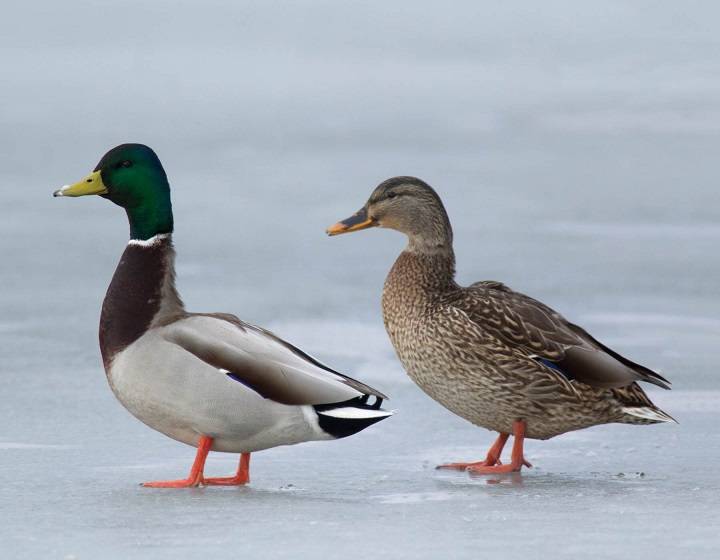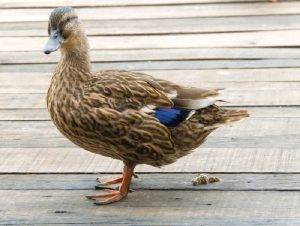Ducks, with their distinctive quacks and playful antics, have long been cherished inhabitants of various environments. Whether gracefully gliding across serene ponds, waddling through scenic parks, or foraging on idyllic farms, these feathered friends contribute to the vibrant tapestry of nature. However, amidst the delight they bring, there exists an aspect that often goes unnoticed – the prevalence and significance of duck poop.
Understanding the composition of duck feces is a crucial aspect of responsible duck management. Duck droppings are a complex mixture of organic matter, water, and various nutrients. The nutrient content, particularly nitrogen and phosphorus, can have both positive and negative effects on the environment. While these nutrients can enrich soil fertility when properly managed, an excess of them in aquatic ecosystems can lead to water pollution, causing imbalances in nutrient levels and negatively impacting water quality.
Moreover, the accumulation of duck poop in public spaces raises concerns about potential health hazards. The feces may harbor bacteria and parasites, posing risks to both humans and other animals. Therefore, managing and minimizing the impact of duck droppings in areas frequented by people become essential to maintain a healthy coexistence.
In this comprehensive guide, we’ll explore the multifaceted aspects of duck poop, addressing its ecological significance and potential consequences. We’ll delve into the composition of duck droppings, shedding light on the nutrients they contain and how these can affect soil and water ecosystems. Additionally, we’ll discuss various management techniques, from natural solutions like encouraging the growth of vegetation that can absorb nutrients to human interventions such as designated feeding areas and clean-up strategies.
Furthermore, this guide will emphasize the importance of community awareness and involvement in maintaining a balance between appreciating the presence of ducks and mitigating the challenges associated with their droppings. By fostering an understanding of the ecological impact of duck poop and implementing sustainable practices, we can ensure that our shared spaces remain havens for both humans and ducks alike.
So, join us on this journey into the world of duck poop, where we unravel the intricacies of its composition, explore its effects on the environment, and provide practical insights into managing this inevitable byproduct for the benefit of all.
What is Duck Poop?

In addition to the mentioned components, duck feces also contain other substances that contribute to its composition:
- Microorganisms: Duck poop may harbor various microorganisms, including bacteria and fungi, which play a role in the decomposition process. These microorganisms are essential for breaking down organic matter in the feces.
- Odor-producing compounds: The distinct odor associated with duck feces is attributed to compounds such as ammonia and hydrogen sulfide. These compounds are byproducts of the microbial activity during the decomposition of organic material in the feces.
- Minerals and trace elements: Duck feces can contain minerals and trace elements derived from the duck’s diet. These include calcium, phosphorus, potassium, and other essential nutrients that are not fully absorbed during the digestion process.
- Environmental Impact: The presence of duck feces in water bodies can have environmental implications. Large concentrations of duck poop can contribute to nutrient loading in aquatic ecosystems, potentially leading to algal blooms and affecting water quality.
- Role in Ecosystems: Despite its potential environmental impact, duck feces also serves as a source of nutrients for certain organisms in ecosystems. In aquatic environments, for instance, some microorganisms and invertebrates feed on the organic matter present in duck feces, contributing to nutrient cycling.
- Health Concerns: While duck feces generally pose minimal health risks to humans, it’s essential to be cautious, especially in areas with large duck populations. Accumulation of feces in public spaces can create unsanitary conditions, and direct contact with duck feces should be avoided to prevent the transmission of potential pathogens.
Understanding the composition of duck feces is crucial not only for ecological reasons but also for managing the impact of waterfowl populations on their surroundings. Researchers and environmentalists often study waterfowl feces to assess the health of ecosystems and develop strategies for maintaining a balance between wildlife and environmental sustainability.
Impact of Duck Poop
While duck poop may seem innocuous, its impact can be significant in various contexts:
Environmental Impact
- Nutrient enrichment: Duck feces are rich in nitrogen and phosphorus, which can act as fertilizers when deposited in water bodies. However, excessive nutrient levels can lead to eutrophication, causing algal blooms and disrupting aquatic ecosystems.
- Water pollution: Accumulation of duck feces in ponds, lakes, or waterways can degrade water quality, posing risks to aquatic life and recreational activities.
Health Concerns
- Zoonotic diseases: Duck feces can harbor pathogens such as E. coli, Salmonella, and Cryptosporidium, potentially causing illness in humans and other animals if proper hygiene measures are not observed.
Managing Duck Poop
Effectively managing duck feces is essential to mitigate its adverse effects on the environment and health:
Habitat Modification
- Vegetation buffers: Planting vegetation around water bodies can help filter duck feces and reduce nutrient runoff.
- Floating islands: Installing floating islands made of natural materials can absorb nutrients and provide a habitat for microorganisms that break down fecal matter.
Encouraging Natural Predators
- Introducing natural predators like certain fish species or waterfowl can help control the duck population, subsequently reducing the accumulation of feces.
Cleaning and Removal
- Regular cleaning: Implementing routine cleaning schedules in areas frequented by ducks can minimize the buildup of feces.
- Mechanical removal: Using nets or skimmers to physically remove duck poop from water surfaces.
Duck Poop
Related Post:
A Symphony of Beauty: Exploring the World of Beautiful Birds
Birds of a Different Feather: Unveiling the Fascinating World of Weird Birds
The Enigmatic Beauty of Ducks with Red Faces
Duck poop, while often considered an inconvenience, holds ecological importance and requires responsible management. Understanding its composition, impact, and effective management techniques is essential for maintaining environmental balance and minimizing health risks associated with its accumulation. By implementing appropriate strategies, we can appreciate the presence of ducks while mitigating the potential adverse effects of their feces on the environment.
Remember, proactive measures in managing duck poop not only benefit the ecosystem but also ensure healthier habitats for both wildlife and humans.



